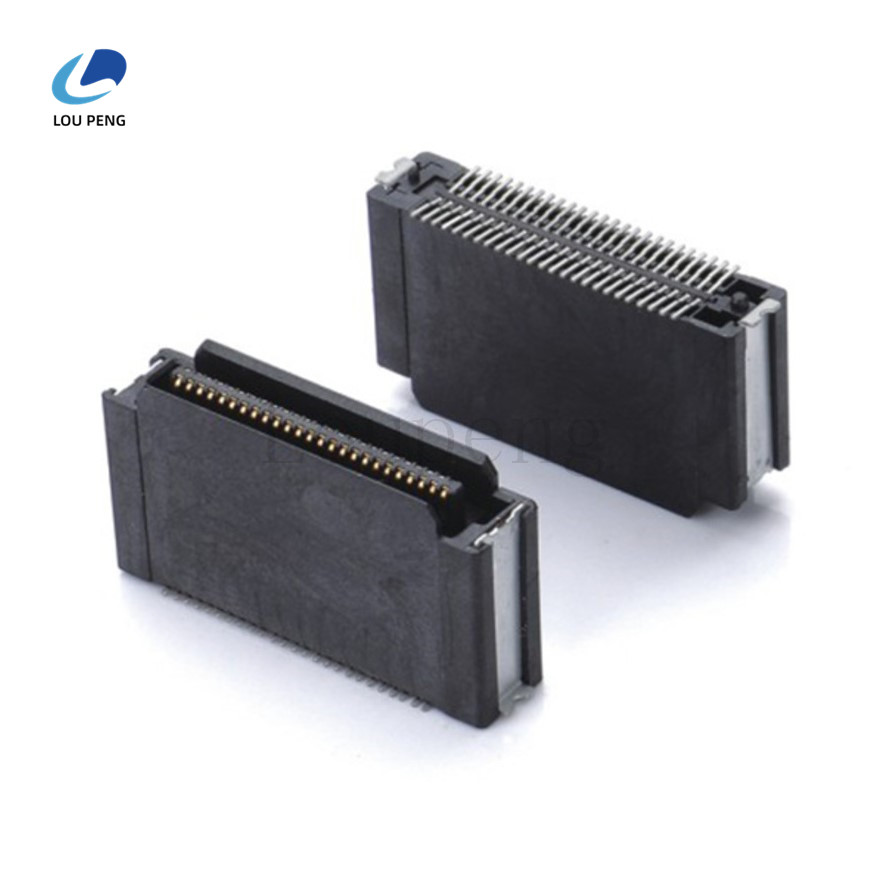Detailed explanation of the correct welding method for SCSI connector joints!
With the rapid development of computer technology, data transmission rate and stability have become important indicators for measuring computer performance, and SCSI (Small Computer System Interface) is a high-speed data transmission interface standard widely used in high-end computer systems. In the process of realizing SCSI connection, the welding of connector joints is a very critical step. In this article, LouPeng Connector Factory will introduce in detail the correct welding method of SCSI connector joints.

一. Prepare tools and materials for SCSI connector welding:
1. Soldering table and soldering iron: Choose a soldering iron with stable temperature and fast reheating speed, and equip it with a suitable soldering table.
2. Flux: In order to improve the welding effect, you can use an appropriate amount of flux.
3. Solder: Choose solder with good quality and high purity.
4. Cleaning cloth: Used to clean impurities and dirt on the welding surface.
5. Magnifying glass: Convenient to observe the welding surface and ensure the welding quality.
二. Soldering steps of SCSI connector:
1. Clean the surface of the joint: Use a cleaning cloth to gently wipe the surface of the joint to ensure that there are no impurities and dirt. At the same time, check whether there is oxidation or corrosion on the surface of the joint, if so, it should be handled in time.
2. Tinning preparation: Adjust the appropriate temperature on the soldering iron, place the solder wire on the tip of the soldering iron, and wait for it to melt. Then apply the solder evenly on the contact surface of the joint to ensure that the entire contact surface is covered with a thin and uniform layer of solder.
3. Align and fit: Align the connector joint to the target position and press gently to fit it. Make sure that the pins of the connector joint are parallel to the target surface without skew or misalignment.
4. Soldering: Place the soldering iron between the connector joint and the target surface and solder with appropriate soldering time and temperature. During the soldering process, keep the soldering iron stable and avoid shaking. Observe the soldering surface to ensure that the solder fully penetrates into each contact point.
5. Check and clean: After completing the soldering, use a magnifying glass to carefully check the soldering quality. Make sure that each contact point is fully covered with solder and there is no virtual solder or cold solder. If necessary, you can use flux and solder for repair soldering. Finally, use a cleaning cloth to clean up excess solder and impurities.
6. Cooling and fixing: Let the soldering part cool naturally. After cooling, use a suitable fixing method to fix the connector joint to the target position to ensure that it is stable and reliable.
三. Precautions for SCSI connector welding:
1. Soldering temperature: Controlling the welding temperature is the key. Too high a temperature may cause the plastic material of the connector joint to melt, while too low a temperature may prevent the solder from fully melting. Therefore, the appropriate soldering iron temperature should be selected and adjusted according to the actual situation.
2. Welding time: It is also very important to control the welding time. Too long a welding time may cause the pins of the connector joint to be corroded by the solder, while too short a welding time may prevent the solder from fully penetrating into the contact points. Therefore, the length of the welding time should be mastered.
3. Operation details: Be stable and careful during operation. Avoid shaking the soldering iron or using too much force to cause the pins to deform. At the same time, pay attention to safety to avoid burns or electric shock accidents.
4. Cleaning and maintenance: Keeping the welding tools clean and dry helps improve the welding effect. Regularly clean the impurities and oxides on the soldering iron head, and apply an appropriate amount of antioxidant for maintenance.
5. Quality inspection: After completing the welding, quality inspection should be carried out to ensure that each contact point is well welded and fault-free. If a bad contact point is found, it should be repaired or re-welded in time.
Summary: By mastering the above steps and precautions, we can successfully complete the correct welding of the SCSI connector. In actual operation, we must continue to accumulate experience, strive for excellence, improve welding quality and reliability, and provide a strong guarantee for the stable operation of the computer system.


